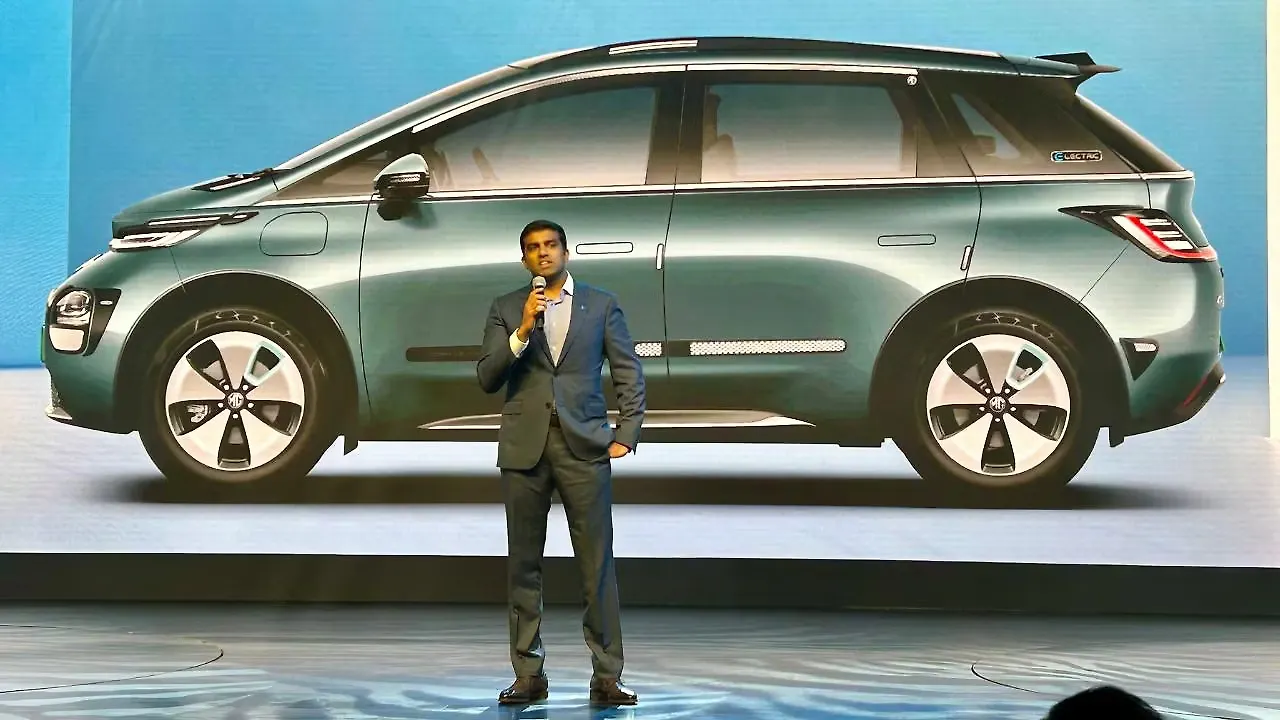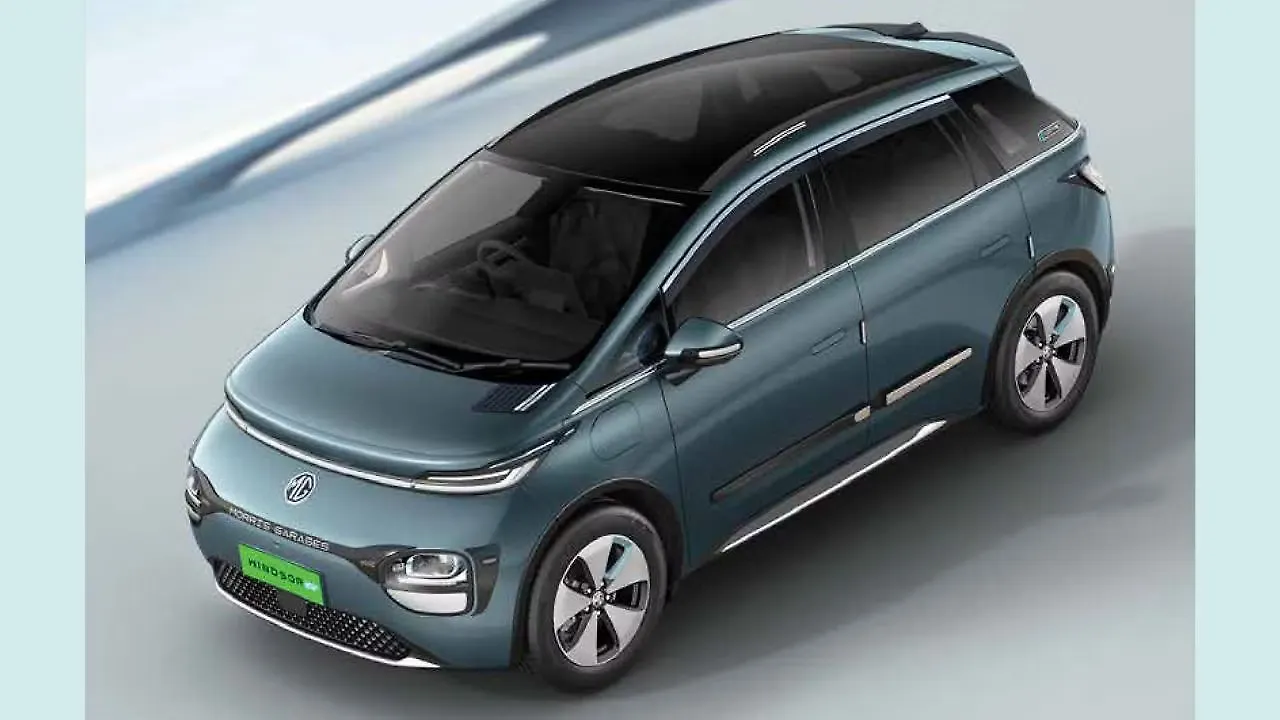
On Wednesday, JSW MG Motor India not only unveiled its latest electric vehicle (EV), the Windsor, but also introduced an innovative ownership model designed to bridge the gap between electric vehicles and traditional internal combustion engine (ICE) cars.
With this forward-thinking or disruption approach the carmaker aims to dispel common concerns and misconceptions surrounding EV ownership, offering a seamless and compelling alternative to conventional vehicles.
At the launch event, the company caught the industry off-guard by announcing an enticing ex-showroom price of INR 9.99 lakh for the base model of the Windsor, positioning it as a highly competitive option for potential EV buyers. However, this price is for the vehicle ‘without the battery,’ as the OEM has introduced an innovative 'Battery as a Service' (BaaS) model. Under this system, customers will pay for battery usage based on the vehicle’s mileage, at a rate of INR 3.5 per kilometre.
Unlike traditional financing structures, this model, which offers 331km of range, doesn’t equate to a fixed monthly payment, as the battery rental cost fluctuates according to usage, with a minimum charge applicable for 1,500 kilometres per month. Additionally, the company is offering free charging for the first year, with an added cost of INR 1 per kilometre for charging from the second year onwards.
According to Satinder Singh Bajwa, Chief Commercial Officer at JSW MG Motor, these “additional costs will still be only 40% of the fuel expenses incurred by conventional ICE vehicles, making the Windsor a compelling choice for budget-conscious customers in the EV market.”
Marketing Masterstroke
At the vehicle launch, Parth Jindal, Director of JSW MG Motor India, shared insights into the strategic thinking behind the introduction of the Windsor, the company’s first vehicle since joining the JSW fold. 'When we became part of MG, we dedicated six months to meticulous research, identifying the ideal product for the Indian market. We travelled extensively, studying offerings across Asia and Europe, and when we encountered the Windsor, we knew it was the perfect fit for India,' Jindal remarked.
Addressing the innovative 'Battery as a Service' (BaaS) model, Jindal explained how JSW MG is breaking conventional barriers. Traditionally, electric vehicles are more expensive than their fossil fuel counterparts, primarily due to the cost of the battery. The carmaker is challenging that narrative with Windsor, he stated.
He elaborated on the financial structure, highlighting how 92% of Indian car buyers opt for EMI plans. With the Windsor, buyers will have a fixed loan component for the vehicle and a variable component for the battery rental. “When calculating the total cost of ownership, we are charging INR 3.5 per kilometre for the battery. Compared to traditional engines, which average 11 to 13 km per litre in this segment, the running cost works out to INR 8 to INR 9 per kilometre. Factoring in maintenance, oil changes, and annual servicing, the total cost rises to around INR 10 per kilometre,” Jindal explained.
In contrast, the Windsor offers an attractive cost breakdown: INR 3.5 per kilometre for the battery, INR 1 for charging (free for the first year), and minimal maintenance costs, totaling approximately INR 3.75 (for the first year) and thereafter INR 4.75 per kilometre. With the vehicle priced at INR 9.99 lakh (excluding the battery), it is on par with the cost of a compact internal combustion engine (ICE) SUV, making it a disruptive offering, he pointed out.
With this concept, 'we believe the Windsor will not only be affordable but will also become accessible to buyers in Tier-2 and Tier-3 cities, expanding the EV market beyond the major urban centres,' Jindal noted.
Speaking at a roundtable, Satinder Singh Bajwa, Chief Commercial Officer of JSW MG Motor India, outlined the financial structure of the Windsor EV under the BaaS model. He explained that customers would pay both battery rentals and EMI over a period of eight to nine years, depending on the chosen financing plan. 'This model is based on one of our finance partners, but we have established tie-ups with three others, and the plan may evolve accordingly,' he noted.

Bajwa emphasised the cost-effectiveness of BaaS, explaining that the battery rental fee is comparable to, or even lower than, the cost of petrol. 'By reducing the upfront cost of the vehicle significantly, we are making electric vehicles more accessible to a wider audience,' he said. 'Over five years, this concept will prove highly beneficial to customers in terms of savings and overall cost management.'
Breaking The Mould
The Windsor, competing in the 4.3-metre utility vehicle segment, distinguishes itself with a unique lifetime warranty for the first owner, encouraging long-term ownership while also aligning with the increasing demand for environmentally conscious choices. By promoting sustainability through reduced vehicle turnover, the Windsor enhances its appeal to eco-conscious consumers.
Offered in three variants and four colour options, the Windsor’s full lineup will be revealed in the coming weeks, with the announcement of prices for the remaining variants. The brand, one of the youngest OEMs in India, has seen about 40% of its sales coming from its EV models over the past four months. 'Once all variants of the Windsor are launched, we expect EV sales to cross the 50% mark,' Bajwa said.
While interest in the company’s EVs has been growing in Tier-2 and Tier-3 towns, the lack of charging infrastructure had been a significant hurdle. However, the company has addressed this challenge by ensuring that all dealerships were equipped with charging facilities as of 15 August, marking a significant milestone in their EV expansion strategy.
A notable innovation in the Windsor is its prismatic cell battery design, replacing the cylindrical cells used in previous models. This change optimises space within the battery, allowing for better performance and efficiency.
While the ZS EV, its current EV offering, is positioned as a sports utility vehicle, the Windsor is aimed at the growing Crossover Utility Vehicle market, appealing to a broader range of customers looking for versatility and style in their EV experience.
Also Read:
MG Hector Achieves Record-Breaking Feat To Mark 5th Anniversary